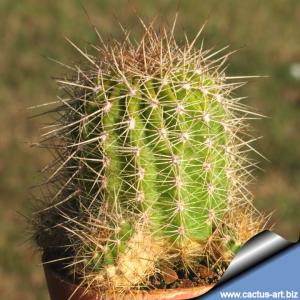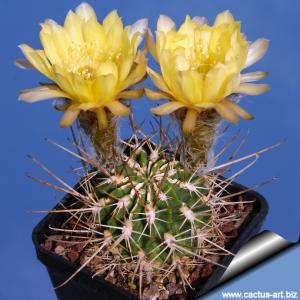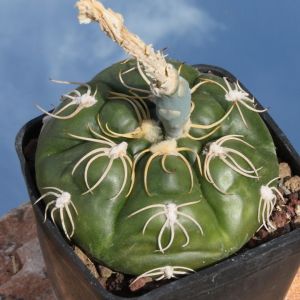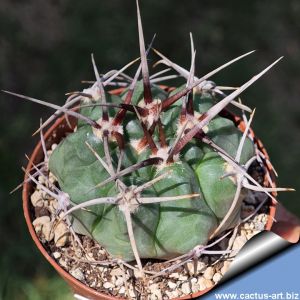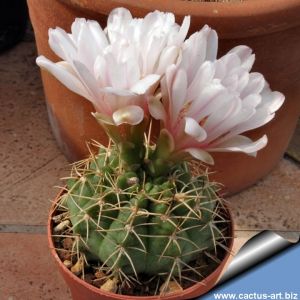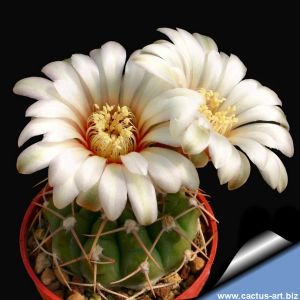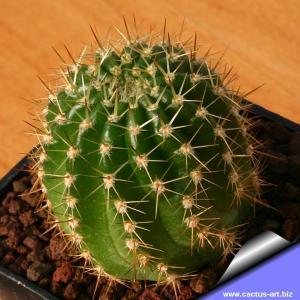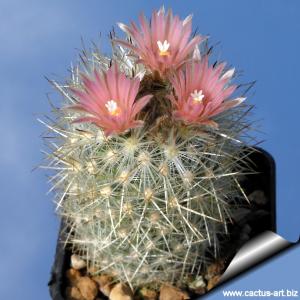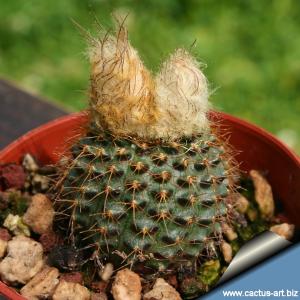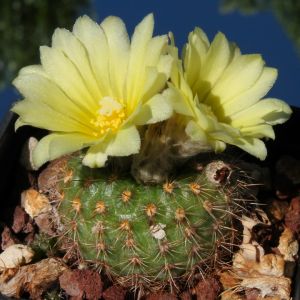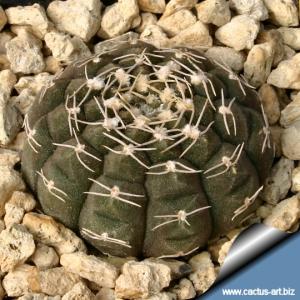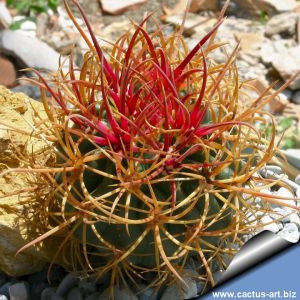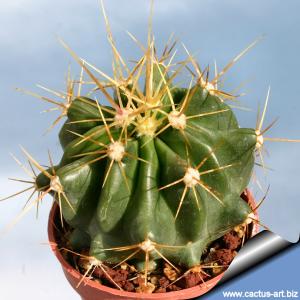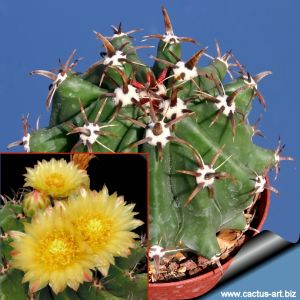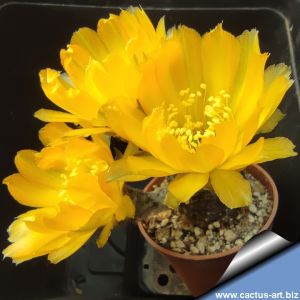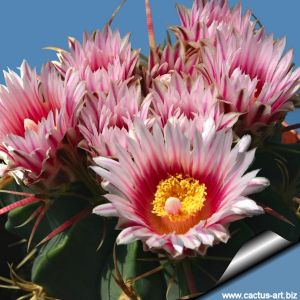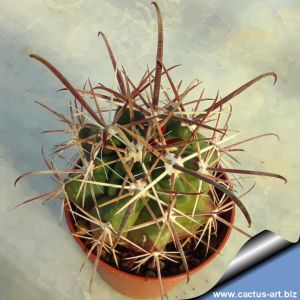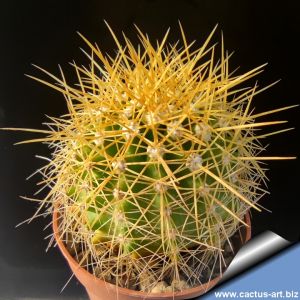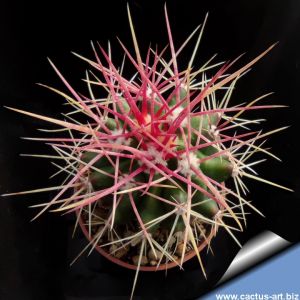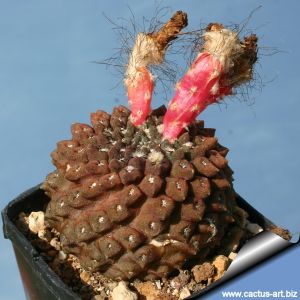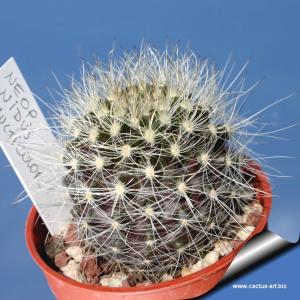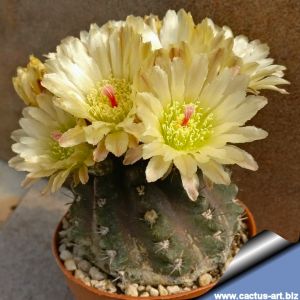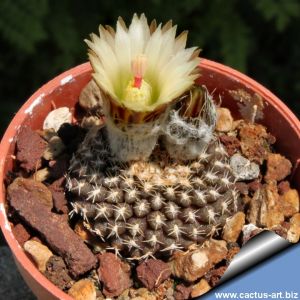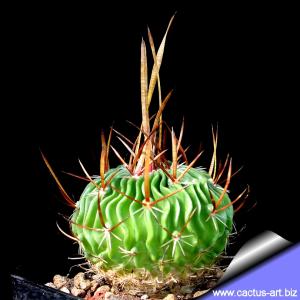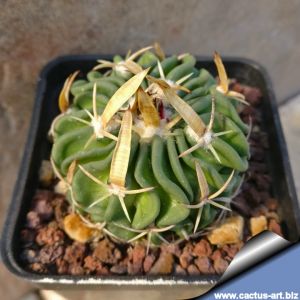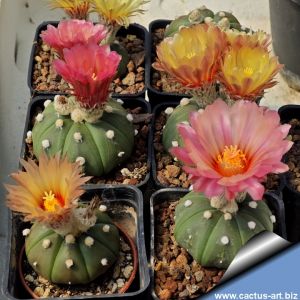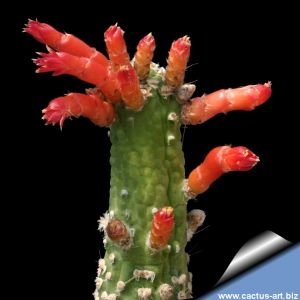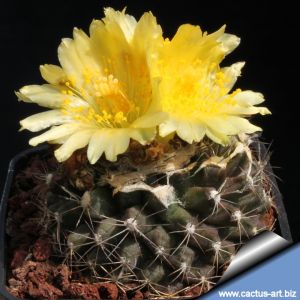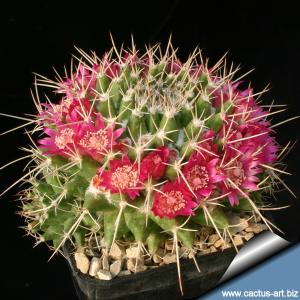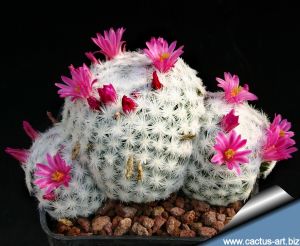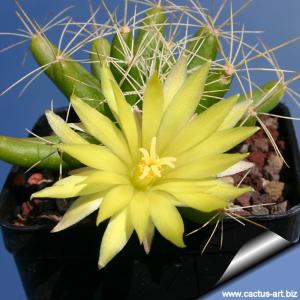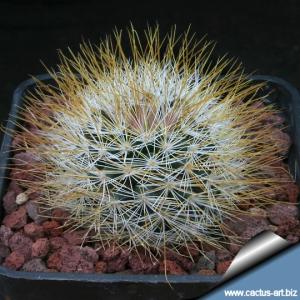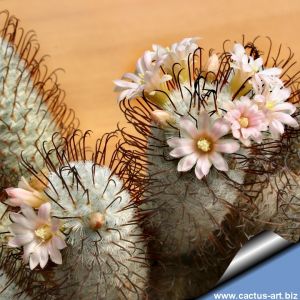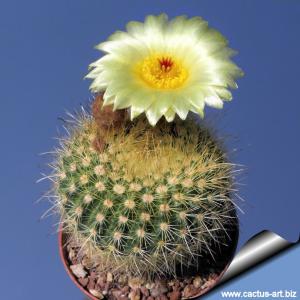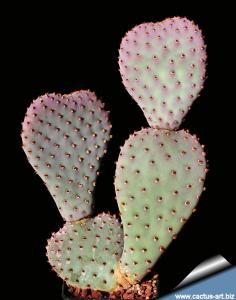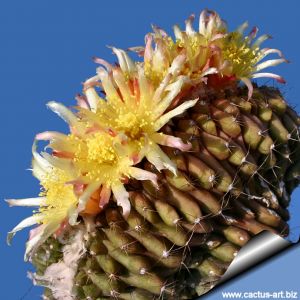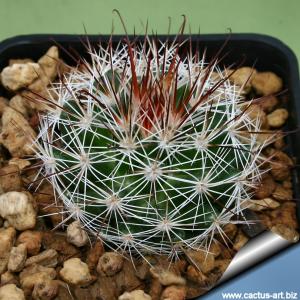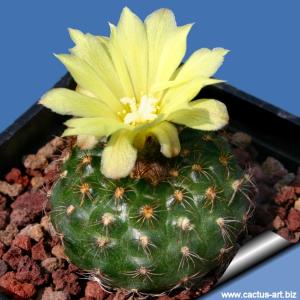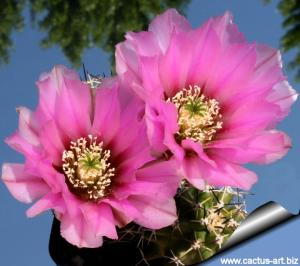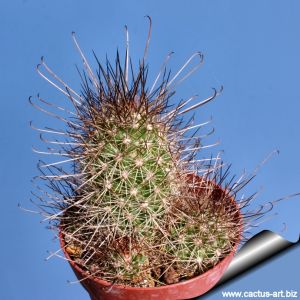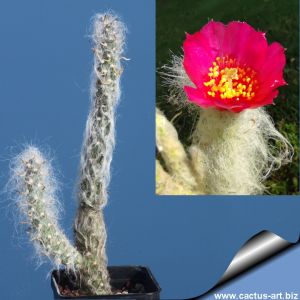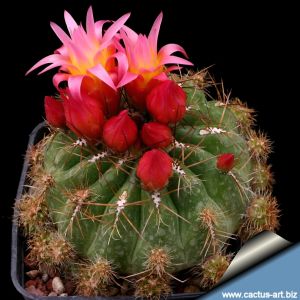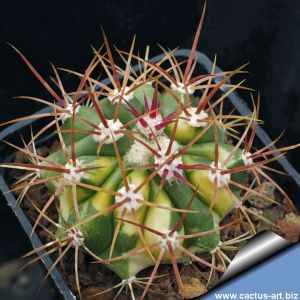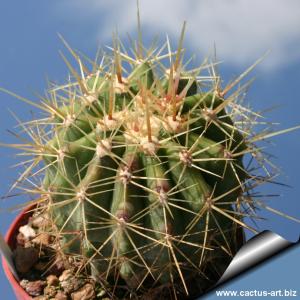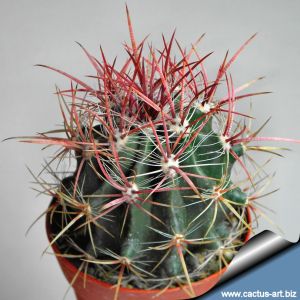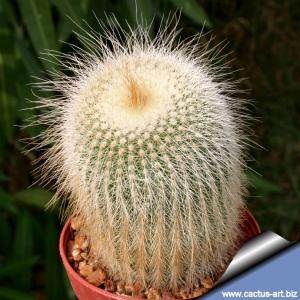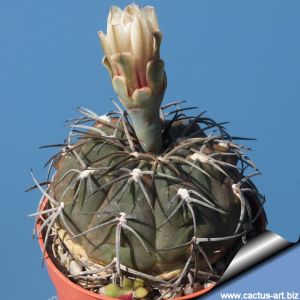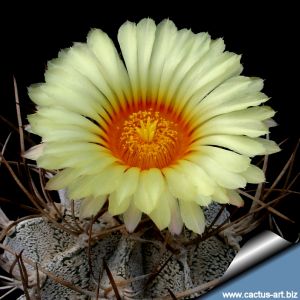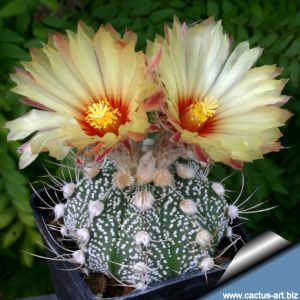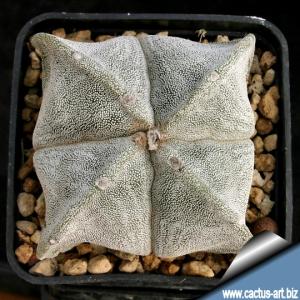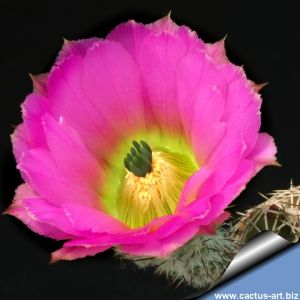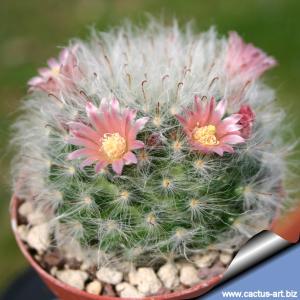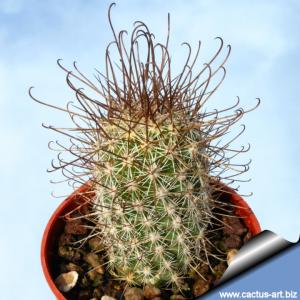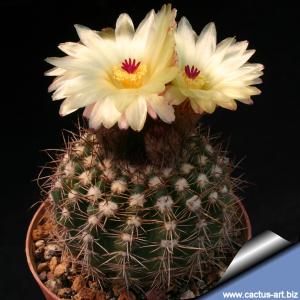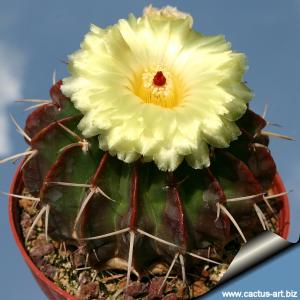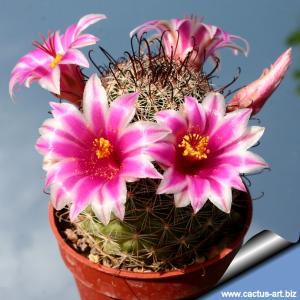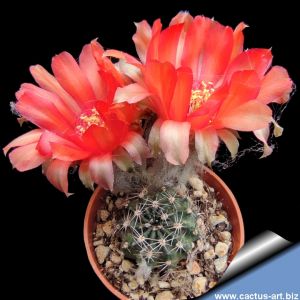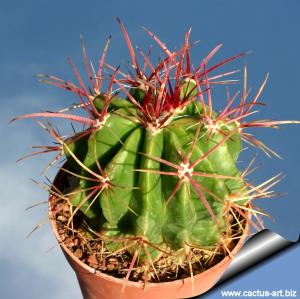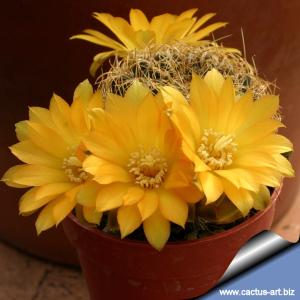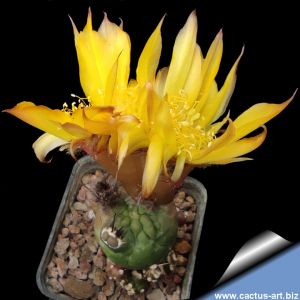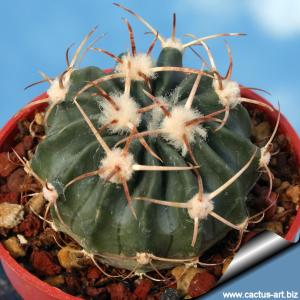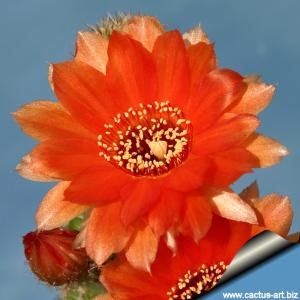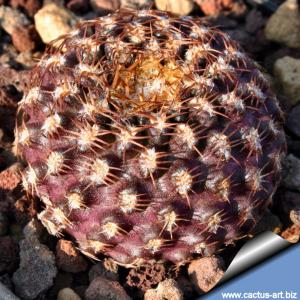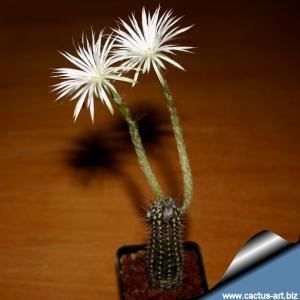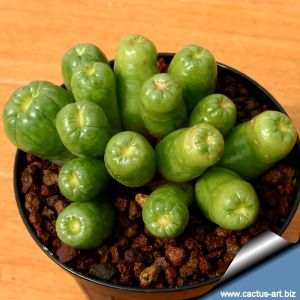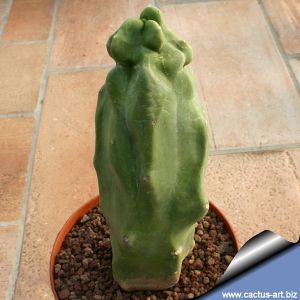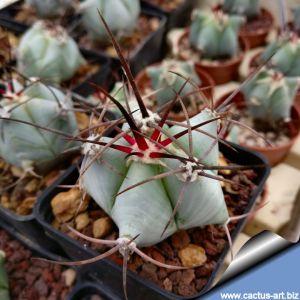-
1
-
2
Lobivia lateritia var. citriflora è una specie molto decorativa, con fusto da globulare a cilindrico. Il nome citriflora si riferisce al genere Citrus (limoni, arance) ed è un richiamo diretto al colore dei suoi fiori: prevalentemente gialli.
-
3
-
4
Cactacea globosa-schiacciata (fino a 10cm) con 13-15 costolature e tubercoli appuntiti. Presenta 5-7 spine robuste e imponenti. Lo spettacolo arriva con i grandi fiori rosa pallido dal centro rosso intenso - una piccola meraviglia!
-
5
Bellissima specie rustica con spine possenti gialle e traslucide con base più scura. Corpo verde brillante. Questo è sempre uno dei gymno più ammirati nelle collezioni.
-
6
Flat dull green body, ribs with tubercles, very nice pinkish flower!
-
7
Bel cactus di lenta crescita con corpo discoidale e spine brune corte rivolte verso la pianta. Resta generalmente solitario ma gli esemplari più vecchi possono accestire.
-
8
Beautiful multicolored hybrids between Soherensia and Echinopsis and Trichocereus.
-
9
-
10
-
11
La forma "dadakii" è globosa con l'apice depresso, ha circa 12 costolature e ramifica alla base e formando piccoli cespi con molte teste. Le spine sono 8 tutte radiali, piegate verso il corpo e contorte, brune che diventano bianche invecchiando.
-
12
Corpo lento nella crescita, pressoché discoidale e appena emergente dal terreno, con tonalità che vanno dal verde-grigio al bruno-violaceo e al rosso mattone. Fiorisce da giugno a settembre con fiori bianchi, spesso riuniti in gruppi.
-
13
Rara specie spesso cartellinata come F. pottsii var. alamosanus con spine relativamente piccole e diritte per un ferocactus. E difficile trovare grossi esemplari nelle collezioni.
-
14
Il F. chrysacanthus "rubrispinus" è una forma coltivata con favolose spine rosse. E' uno dei migliori ferocactus con spine colorate ma di crescita relativamente lenta. Grazie alla densa copertura di spine si adatta bene alla coltivazione in pieno sole.
-
15
La varietà 'victoriensis' è meno comune del classico "echidnae" ha fusti più cilindrici e spine centrali robuste più lunghe di 4,5 cm, e fiori gialli con sfumature rossastre.
-
16
Pianta molto caratteristica e inconfondibile per via delle spine corte e robuste. Di facile coltivazione diventa molto bella con il tempo.
-
17
Beautiful plants with dark purple almost black body. Flowers yellow or orange.
-
18
Chiamato anche “Candy Cactus”, Ferocactus macrodiscus è un cactus a botte di dimensioni medie, con fusto appiattito blu-verde. Cresce rapidamente da seme e fiorisce già a pochi centimetri di diametro. I fiori sono bianchi con petali striatidi viola.
-
19
Ferocactus santamariae is a massively spined barrel cactus with stout, fierce red spines. The flower yellow or straw-yellow with a pale-red center line on the petals, and pleasant-smelling. It is a close relative of Ferocactus peninsulae.
-
20
Ferocactus schwarzii is a solitary barrel cactus with bright gold coloured spines. At a first glance the young specimens looks more like a Echinocactus grusonii than a Ferocactus. As they age the number of spines decreases to 0-2.
-
21
Red decorative spines, curved central spines. Colorfull.
-
22
Pianta bellissima quasi completamente priva di spine. Se vi piacciono piante con il corpo porpora scuro, dovete certamente predere questa.
-
23
-
24
Pianta affascinate con corpo appiattito di colore grigio-verde fino porpora scuro generalmete con poche spine, ma alquanto variabili. Fiori da giallo-verde fino a rosa.
-
25
-
26
-
27
Peculiar species distinguished for its small sized yellowish blooms, very short flattened foliaceous central spines and few radial spines.
-
28
Piante con epidermide verde e priva di puntini (nuda) che mette in risalto le areole bianche. Fiori grandi giallo-crema con riflessi madreperlati e gola rosso. Alcuni esemplari con fiori rosati.
-
29
Fusti con tuberculi assimetrici che crescono in forma di colonne erette o variamente ritorte che ricordano serpenti. Produce con facilità fiori rossi di forma tubolare in estate.
-
30
Specie di piccola dimensione e facile da coltivare. Il corpo è naturalmente di colore porpora scurissimo e produce facilmente grandi fiori gialli.
-
31
Nelle giornate più calde dell'estate è possibile ammirare gli splendidi fiori gialli di questa specie che sono più grandi della pianta stessa. Il corpo minuscolo è di uno splendido colore porpora scurissimo e le spine sono rossiccie.
-
32
Compact, rather low body, fast growing, many purple-pink flowers. Forms large emispheric mounds in time.
-
33
Questa è una delle specie più belle con spine bianco candido e fiori rosa-porpora. Fiorisce abbondantemente in primavera.
-
34
I tubercoli sono molto pronunciati, lunghi, soffici e flaccidi. I fiori di colore giallo limone sono tra i più grandi dell'intero genere (Diametro circa 6 cm!) e sono prodotti in abbondanza in estate.
-
35
-
36
Simile alla Mammillaria bombycina ma più piccola, si riconosce per le spine centrali scure e uncinate e per le fitte spine radiali bianche e pettinate che celano l’epidermide. I fiori sono rosa chiaro: una delle specie più belle.
-
37
Corpo sferico appiattito con numerose costole, capace di produrre fino a sette fiori giallo oro simultanei tra tarda primavera ed estate. Spine sottili e filamentose, talvolta curvate, bianco-giallastre e poco differenziate.
-
38
-
39
Pygmaeocereus familiaris is one of the smallest cactus, that in nature forms cushions with many green stems usually less than to 2 centimeters in length. The funnel-shaped, white flowers are up to 8 cm long and strongly perfumed.
-
40
Piante su radici proprie. Bella forma cristata con con fusti di colore verde-oliva più o meno grigiastri o rosso-brunastri che forma bei mondi simili a cervelli. Facile da coltivare fiorisce generosamente e ripetutamente durante tutta la buona stagione.
-
41
Mammillaria marcosi è una bella pianta con spine radiali bianche e spine centrali rosso-bruno scuro. Lentamente forma cespi irregolari con dense spine. Può raggiungere il diametro di 25 cm e formare fino a 30 teste.
-
42
La F. schilinzkyana è una minuscola e affascinante specie con spine morbide e innoffensive. Nelle belle giornate estive si possono ammirare i splendidi fiori gialli più grandi della pianta stessa.
-
43
Spine centrali lunghe e robuste. Grandi fiori rosa tendenti al malva, con un centro scuro che crea un piacevole contrasto con le antere crema e il pistillo verde.
-
44
Clumping cactus, irregularly forming clusters up to 1 m across or more. Flowers large, spectacular, zygomorphic bright scarlet. Not the most easy to grow but worth trying. Be careful with too much water and give it good ventilation. Strong spination.
-
45
Pianta di grande eleganza. Forma sottili ventagli con affascinati apici crestati completamente ricoperti da lunghi peli bianchi.
-
46
Questa pianta è facilmente riconoscibile per le sue piccole dimensioni e la produzione abbondante di germogli intorno alla base. I fiori sono colorati. Fiorisce in modo abbondante! Le dimensioni, la forma e il colore delle spine sono variabili.
-
47
# # # SPECIAL PLANT # # # (Selected specimen)
Diameter 5 cm. This is a seed grown specimen, only this one available!
-
48
Il F. reppenhagenii anche da adulto resta di piccolo diametro ma si allunga molto ed assume una forma colonnare quasi cereoide.
-
49
Questa è una delle specie di Ferococtus più spettacolari. Fornita di di fantastiche spine rosso corallo e di contrastanti lunghe setole bianche nelle areole.
Sinonimo: Ferocactus pilosus
-
50
-
51
Plants raised from seed. Variable.
-
52
L'Astrophytum capricorne v. niveum, dal nome latino "niveum" (neve), ha un corpo bianco ricoperto di puntini candidi che si intensificano al sole. Fiorisce abbondantemente in estate con fiori gialli e gola rossa, creando un affascinante contrasto.
-
53
Ibridi CAP-AS – Fusione tra A. asterias e A. capricorne: costolature leggermente prominenti e grandi fiori giallo-crema con riflessi madreperlati e gola rosso intenso. Piante variabili, dall’aspetto unico e affascinante.
-
54
Pianta dalla geometria perfetta con quattro costole simmetriche invece di cinque. Molto bella e caratteristica.
-
55
-
56
Corolla fucsia incornicia una gola giallo-verde sgargiante, dal bagliore quasi fosforescente—più intenso di un pennarello fluorescente. Una pianta davvero incomparabile!
-
57
M. bocasana var multilanata ha fusti di forma sferica quasi interamentre nascosti dai densi peli lanosi bianchi e dalle corte spine centrali uncinate. Fiori sono rosa, grandi e molto numerosi.
-
58
-
59
Pianta normalmente solitaria con fusto sferico e depresso, i grandi fiori giallo brillante hanno la lucentezza della seta.
-
60
I fusti sono globulari appiattiti, fino a 15 cm di diametro, inizialmente spinosi e poi sempre più lanosi. Diversi fiori gialli lucidi compaiono intorno all'apice molto lanoso del fusto a metà estate.
-
61
I fiori sono molto appariscenti, porpora chiaro con linea mediana più scura rosa bruno e margini chiari, di circa 20-30 mm in diametro. I frutti a forma di clava sono rossi e lunghi circa 25-20 mm.
-
62
-
63
-
64
-
65
Piante su radice propria in forza da fiore (non innestate)
Ha fusti ovoidali quasi privi di spine che ramificano abbondantemente dalla base. Può crescere fino a 30 di altezza. Le fioriture sono abbondanti già su piante di pochi cm di diametro.
-
66
Questa pianta prende il suo nome dal Texas dove è ampiamente diffusa. E' un grosso cactus di forma sferica appiattita, con robuste spine di colore rosa o grigio. E' una pianta longeva che può vivere molti decenni.
-
67
-
68
Piccolo cactus geofita con corpo porpora scuro e piccole spine pettinate arancioni. I fiori sono prodotti dalle areole più giovani nell'apice della pianta. I fiori ocra-arancioni hanno una bellissima lucentezza come di seta.
-
69
Piccolo cactus annoverato fra i più belli e affascinanti. I fiori sottili e lunghissimi si aprono al tramonto e si chiudono alle prime luci dell'alba, sono di colore bianco candido lunghi fino a 12 cm e intensamente profumati.
-
70
"FRED" è uno dei cultivar mostruosi di cactus più famosi e strani: forma globi morbidi, gommosi, di colore verde e rosa. È una mutazione verosimilmente sorta da un esemplare normale di Mammillaria bocasana.
-
71
-
72

